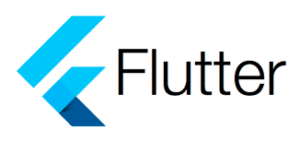I’m having an issue with moving from the splash screen to the next screen in my application. When the app first starts, I want to display a splash screen, and after that I try to use pushReplacement to go from the splash screen to the next screen.
How to implement this method correctly?
-route
GoRouter goRouter(AuthBloc authBloc) {
return GoRouter(
navigatorKey: GlobalKey<NavigatorState>(),
routes: <GoRoute>[
GoRoute(
path: '/',
name: 'intitial',
builder: (context, state) => const SplashScreen(),
routes: <GoRoute>[
GoRoute(
path: '/login',
name: 'login',
builder: (context, state) {
return const LoginPage();
}),
GoRoute(
path: '/homepage',
name: 'homepage',
builder: (context, state) {
return BlocProvider<WeatherBloc>(
create: (context) => WeatherBloc(),
child: MyHomepage(dateTime: DateTime.now()),
);
},
routes: [
GoRoute(
path: '/gempa',
name: 'gempa',
builder: (context, state) {
return BlocProvider<GempaBloc>(
create: (context) => GempaBloc(),
child: const GempaPage(),
);
})
],
)
],
redirect: (context, state) async {
bool islogin = true;
bool hastoken = await authBloc.firebaseAuthService.hasToken();
return hastoken && islogin ? AppRoute.homepage : AppRoute.login;
}),
],
);
}
-main
void main(List<String> args) async {
WidgetsFlutterBinding.ensureInitialized();
// await dotenv.load();
Bloc.observer = Observer();
// await Firebase.initializeApp();
runApp(const MyApp());
}
class MyApp extends StatefulWidget {
const MyApp({Key? key}) : super(key: key);
@override
State<MyApp> createState() => _MyAppState();
}
class _MyAppState extends State<MyApp> {
final FirebaseAuthService firebaseAuthService = FirebaseAuthService();
final AuthBloc authBloc = AuthBloc(FirebaseAuthService());
@override
Widget build(BuildContext context) {
return BlocProvider(
create: (context) =>
AuthBloc(firebaseAuthService)..add(CheckSignStatus()),
child: BlocListener<AuthBloc, AuthState>(
listener: (context, state) {
if (state is AuthUser) {
context.go(AppRoute.homepage);
} else if (state is NonAuthUser) {
context.go(AppRoute.login);
}
},
child: MaterialApp.router(
title: 'sample',
routerConfig: goRouter(authBloc),
debugShowCheckedModeBanner: false,
theme: ThemeData(
textTheme:
GoogleFonts.poppinsTextTheme(Theme.of(context).textTheme),
),
),
),
);
}
}
I’ve read the documentation, but I’m still confused

 Question posted in
Question posted in 

2
Answers
this is the simple way to acheive splashscreen to next page
You just need to add Future.delay for time you need for showing splash screen and navigate to other screen. Below code is for manually if you want to add splash screen but through flutter_native_splash you can generate your own splash screen.